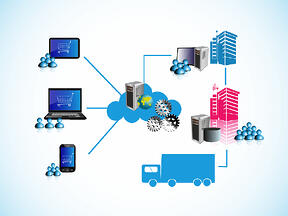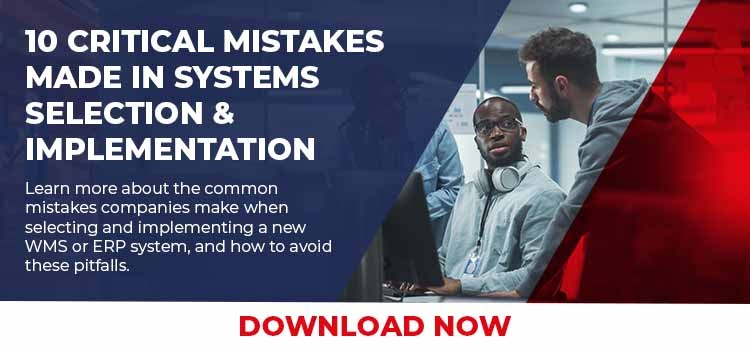To replace your current Order Management System (OMS) or Warehouse Management System (WMS),  there are a wide variety of choices. Should you go with a specialized OMS, or would an enterprise-wide system such as an ERP system be the best choice?
there are a wide variety of choices. Should you go with a specialized OMS, or would an enterprise-wide system such as an ERP system be the best choice?
From a platform perspective, should you choose an on-premise license model or does it make more sense to use a Software as a Service (SaaS) or cloud-based model and pay as you go? If you really like the functionality of your order management system, what options do you have to implement a best-of-breed standalone WMS?
Here are 6 points to consider:
1. Write up your requirements: Regardless of the order management system you are considering, start by formalizing your requirements. They will form the baseline for vendor selection and help you determine the absolute modifications you need to have for implementation.
2. Write and send a Request for Proposal (RFP): Do your homework first to know which vendors should be on the short list for a direct business of your type and size.
3. Create a decision matrix: After getting the vendors’ responses, put their functionality responses on a spreadsheet and compare the answers. In many cases we have also added some formulae to weight the criteria that companies feel are most important.
4. Conduct scripted demos: Invite the two best choices to demonstrate and present their product using a script of how you want the demonstrations to proceed. This lets you be in control and see the parts of the systems that you want.
5. Determine the Total Cost of Ownership: This is where the SaaS and cloud models have totally different costs from the on-premise models. When you add in licenses, hardware, software, maintenance, professional services (for installation, conversion, training, etc.), how to the two approaches compare? SaaS or cloud options may have implementation costs and “pay as you go” transaction processing which allow you to get into a new system at a lower initial cost. But if you look out five years or more, how do the economics work for your implementation?
6. Set up your project management: Think about how you’re going to manage the implementation before you sign the contracts. Companies are lean and managers don’t have much extra time. The reality is that the vendor can’t and shouldn’t project manage the total implementation.
Our opinion is that the vendor certainly will have the project manager and project team for the technical aspects - or you may share in these tasks. However, you need to be responsible for the planning and project control of the implementation, while drawing on the experience of the vendor's team.
Your responsibilities should include the final conference room pilot and sign-off; writing the training and procedures documents; training the relevant departments; reviewing converted files for data integrity; and management sign-off on your readiness to go live.





SHARE